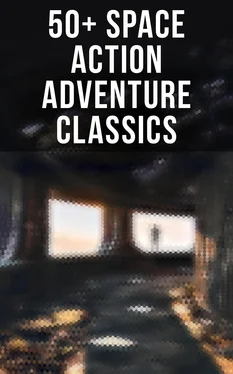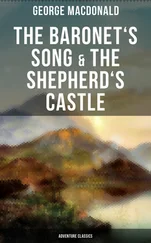Everywhere there was still this suggestion of possible insubordination and the sense of an underlying threat. Man had struggled desperately and had won, but it was only now that he was finding time to consider any but the most immediate and superficial possibilities of his planet.
The air-view as the dispersing delegates from Mégève saw it forty-seven years ago was indeed in the vividest contrast to the world garden in which we live to-day. That clumsy rationality, that real dread of æstheticism, that had haunted the Council to its end, had made the artificial factors in the landscape inelegant and emphatic almost without exception. Bridges and roads “got there”, as Theotocopulos said, “like charging rhinoceroses”. True that the disposition to squat forms, which came from the age of the air raids, no longer prevailed, but there was a general tendency to make buildings too solid and too big; they had sometimes a certain grandiose boldness, but more often than not there was a touch of military stupidity in the appearance of their piled-up masses. They stood to attention. There was a needlessly lavish abundance of pylons, and they were generally too sturdy.
The enrichment of vegetation which is now world-wide was in operation at that time only in a few experimental areas; in most regions there was still hardly more forest or cultivation than had existed a century and a half before. If the devastation of fellings and fires during the last wars had been replaced by the new straight-ruled, squared-out forests, there was as yet no perceptible rise in the level of the plant community anywhere; what had previously been forest was plantation or forest again, and what had been prairie was still prairie, differing only from the grass prairies of older days in the dwindling contingent of weeds and wild flowers. In spite of the self-complacency of the forestry department of that time, many trees distorted by disease survived, and most were by our standards stunted. To young eyes to-day this world of our fathers, as they see it in picture book and panorama, has not merely a regimented but a barren look, and its cultivation seems laborious and poor.
Yet compared with the landscape of two centuries ago its aspect was relatively prosperous, spacious and orderly. There is something very touching in the freely expressed response of the nineteenth-century folk to both urban and country landscape and to natural scenery generally. They did not dream how meagre their descendants were to find the spectacle before them. They had, at any rate, as good cloudscapes and sunsets as we have, and such natural coast scenery as that of Western Scotland was practically the same then as it is to-day. They would endure irksome travel to see sunlit snowy mountain masses or get to some viewpoint that caught the rhythm of a distant chain. They loved water and woodlands and distant fields in a wide view, and towns they admired chiefly as piled up accumulations seen from a distance. Also they delighted very greatly in the close brightness of flowering hedges, sheets of bluebells, primrose rides, green moss and tendrils and any sort of flower. They pick these things out for appreciation so persistently in their literature and paintings that it is only with an effort we realize how much they were “picked out”, and how dull and repetitive were endless miles of their normal roads and countryside and how flatly forbidding the ordinary aspects of their habitations.
So far as we can reconstruct it now the prevalent note of the nineteenth century scene was weak insipidity, degenerating very easily into a distressful mean ungainliness. America was frostbitten in the north and slovenly in the south and unkempt everywhere. Happily the shorter-lived, not very healthy or vigorous folk of these days had no standards of comparison, and actual intimations of discontent with nature and the countryside were rare. There is scarcely an admission in nineteenth-century literature that the larger part of the natural world was gaunt, unsatisfactory and utterly unsympathetic. Writers and poets did not dare to admit as much because they had neither the hope nor the energy to make things better. They would not see it in obedience to an elementary psychological law.
But under the Second Council, the criticism not only of man’s achievement but of natural insufficiency had become voluminous because neither was felt any longer to be final. It was not only the heavy engineering, the massive buildings and the over-emphasied roadways that those returning delegates threatened with their minds. Much of the land was still unsettled. They looked down on areas of marsh and scrub, bare wildernesses of rock, rainless regions, screes and avalanche slopes. For them as for us it was a world of promise still to be fulfilled.
“Now we can begin on all this,” they said. “Now we have really to begin.”
Table of Contents
It had long been known that the vegetation of earth and sea, on which the volume and vigour of all other life depends, was not nearly commensurate with the available moisture and sunlight. As early as the nineteen thirties it was being pointed out by an English economic botanist, Frederick Keeble (1870-1975, Collective Works in the Science section of the Reprints), that there were delays and arrests in the multiplication of diatoms, seasonal grass crops, and other extensive primary vegetable growths, arrests due to the fact that while all other conditions were favourable the supply of assimilable nitrogen was too slow to keep up the growth process. He applied the agricultural lesson of manuring to the whole spectacle of life and insisted that we were living in a “nitrogen-starved world”. Nitrogen is yielded up by the inorganic world to the uses of life with extreme reluctance. This observation of Keeble’s threw a new light for most people on the alleged bounty of nature. Other workers in the same field spread their observations to other elements. Carlos Metom (1927-2014), in a striking passage, compared life on our planet to “a starveling foal on a barren patch that has never learnt to look for green pasture”.
This fundamental poverty of terrestrial existence can be traced through most of the geological record. Life has been a stinted thing. There were a few periods of exuberance, the period of the Coal Measures for example, when life seemed really to pour upward; but for most of recorded time life nibbled round the outside of a ball of limitless mineral wealth to which it had no key. No individual intelligence could ever penetrate that hidden hoard of plenty. It was only when the collective mentality of Science had arisen and was going on deathlessly from one clarification to another that a far more abundant vegetable basis for animal and human existence came within the range of possibility, and only now that the waste of human energy in warfare and uncoordinated trading and money-getting was at an end for ever, that the realization of that possibility could be attempted. But hundreds of thousands of brains are now alight with the prospect of evoking such a plenty and wealth of life on our planet as the whole universe had never dreamed of before this time.
The Second Council, in the beginning of its long reign, had not a sufficient knowledge of the latent powers of applied biology to anticipate this fundamental enrichment of life. It conceived its rôle to be the working-out of the logical consequences of mechanical invention during the nineteenth and twentieth centuries. The greatest of these consequences were the abolition of distance and the supersession of toil by power machinery. The goal of the Council was to confirm and establish human unity for ever, and to set up a frame of progressive public activities that should provide universal employment and universal purchasing power in the face of a continually increasing industrial efficiency. At first it was preoccupied by the persecuting activities that were needed to secure the world against any reaction towards private monopolization, romantic nationalism, religious eccentricism, and social fission. Then, as its success in this direction passed beyond challenge, as the world community was plainly assured, it found itself confronted by an ever more portentous problem of leisure.
Читать дальше











